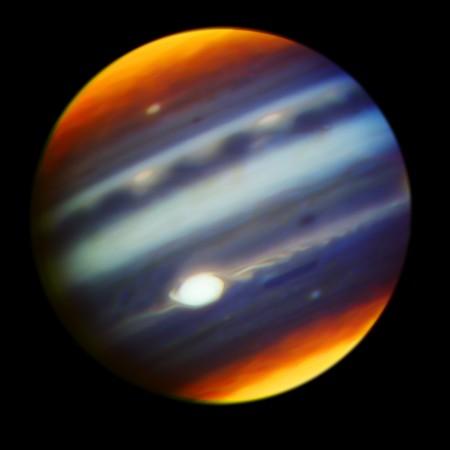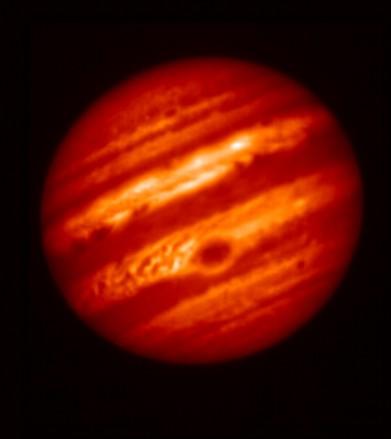
New images of Jupiter and its Great Red Spot have been captured by telescopes in Hawaii. These will help in aiding the first ever close analysis of the Great Red Spot which is scheduled for July 10.
Also Read: NASA supercomputers to identify deadly asteroid impacts
The Great Red Spot (GRS) refers to a persistent zone of high pressure which produces an anticyclonic storm on 22° south of the south of the equator.
NASA's Juno is set to fly directly over Jupiter's significant feature, GRS, at a height of around 9,000 kilometres (5,600 miles).

Various observations of the gas-giant Jupiter were made using the Earth-based telescopes through the Juno mission which were obtained to help the spacecraft explore the atmosphere of the planet.
Jupiter was analysed simultaneously by Gemini North telescope and the Subaru telescope which are present on Hawai's Mauna Kea peak at different wavelengths and high resolution on May 18, 2017.
The latest findings accumulated about the gas giant have helped in providing data regarding the atmospheric dynamics at different depths at the GRS as well as the other regions of the planet.
The GRS was first spotted after 1830, it is a century old swirling storm whose diameter is bigger than that of Earth. Juno had entered the orbit around on 4 July 2016, it will use its multiple instruments to examine the GRS while it flies over it about 12 minutes after the spacecraft makes it closest approach in the current orbit of the gas giant on July 10, 2017 at 6:55pm PDT (9:55 p.m. on July 10, EDT; 1:55 a.m. on July 11, Universal Time).
"Observations with Earth's most powerful telescopes enhance the spacecraft's planned observations by providing three types of additional context," said Juno science team member Glenn Orton of NASA's Jet Propulsion Laboratory, Pasadena, California.
"We get spatial context from seeing the whole planet. We extend and fill in our temporal context from seeing features over a span of time. And we supplement with wavelengths not available from Juno. The combination of Earth-based and spacecraft observations is a powerful one-two punch in exploring Jupiter," Orton added.
Orton collaborated with researchers at Gemini in Subaru, the University of California at Berkeley, Tohoku University, Japan and elsewhere in planning the recent observations.
The observers used Gemini North on May 18 to examine Jupiter through special near-infrared filters. The filters exploit specific colours of light that can penetrate the upper atmosphere and clouds of Jupiter, revealing mixtures of methane and hydrogen in the planet's atmosphere. These observations showed a long, fine-structured wave extending from the eastern side of the Great Red Spot, a NASA statement quoted.
On the same night, researchers used Subaru's Cooled Mid-Infrared Camera and Spectrometer (COMICS), with filters sensitive to temperatures at different layers of Jupiter's atmosphere. These mid-infrared observations showed the Great Red Spot "had a cold and cloudy interior increasing toward its centre, with a periphery that was warmer and clearer," Orton said.
"A region to its northwest was unusually turbulent and chaotic, with bands that were cold and cloudy, alternating with bands that were warm and clear," Orton concluded.
NASA's Juno had lately captured the images of Jupiter's multicoloured clouds on May 19, 2017, during its seventh close flyby the planet, from a distance of 46,900 kilometres (29,100 miles).
















